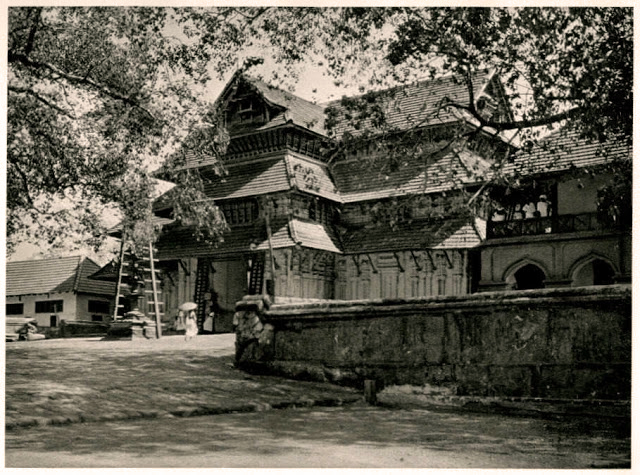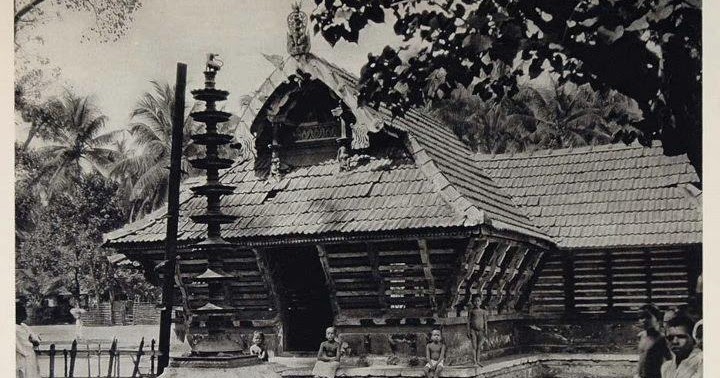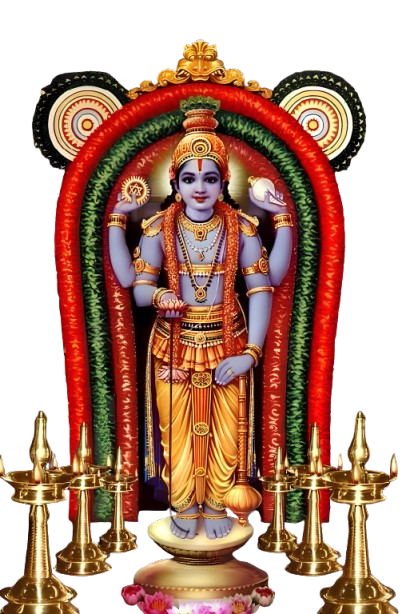
History and Power Struggles of Guruvayur Temple
The Guruvayur Temple History is as tumultuous as the life story of Lord Krishna Himself. Over the centuries, the temple has witnessed numerous power struggles and legal battles. Initially, the Guruvayur temple was under the control of the Thirukannamathilakam Temple. The ownership was vested in seven families, known as “Ooralars” (trustees), including the Mallissery family. Eventually, only the Mallissery family remained as the sole trustee.
Transition of Power and External Challenges
In the late 14th century, as the Zamorin of Calicut began expanding southwards, the rulers of Punnathur surrendered the Chavakkad region to the Zamorin. Consequently, the temple’s external supervisory rights (“Puram Koima”) were transferred to the Zamorin. The temple faced its first major attack in 1712 when Dutch forces plundered it. The Kodimaram (flagstaff) made of gold and the treasure stored in the temple’s sanctum were looted. The western gopuram (tower) was set on fire. However, the damage was quickly repaired using revenue generated during the Ekadashi festival.
In 1755, the Dutch army captured Thirukannamathilakam but was ousted the following year by the Zamorin. In the 18th century, Mysore ruler Hyder Ali planned to attack the temple. Vadakkeppat Variyar offered 10,000 coins to Hyder Ali, persuading him to retreat. However, Tipu Sultan’s campaigns posed another threat. In 1789, the main idol was hidden in a well for protection, while the utsava murti (processional idol) was carried to Ambalappuzha by Mallissery and Kakad Othikkan families.
British Era and Legal Disputes
When British rule began, the Zamorin strengthened their claim over the temple’s administration. This led to prolonged legal battles with the Mallissery family, lasting over a century. In 1822, the Zamorin was declared a co-trustee. By 1854, a formal agreement confirmed the Zamorin’s role in the administration. Legal disputes continued, and in 1915, the British-implemented “Court of Wards” took over the Zamorin’s estate, including the temple, for 12 years. A British officer named A.J. Thorne was appointed as the administrator during this period.
Modern Era and Government Involvement

In 1927, the Madras Religious Endowments Act was introduced, granting administrative rights to the Zamorin. The Mallissery family contested this in court. By 1930, the administration was revised to include both the Zamorin and the Mallissery family. A devastating fire in 1970 destroyed much of the temple. In 1971, the Kerala government took over the temple’s administration. The current governance structure was established under the amended Guruvayur Devaswom Act of 1978.
The Legacy of Guruvayur Temple
Guruvayur Temple’s history dates back centuries, with origins steeped in legend. According to mythology, the temple was consecrated by Guru (Brihaspati) and Vayu (the wind god), hence the name “Guruvayur.” The idol of Lord Krishna worshipped here is believed to have been worshipped by Lord Krishna Himself in Dwaraka. After Dwaraka’s submersion, the idol was brought to Kerala by Guru and Vayu and installed at Guruvayur.
The temple’s rituals and traditions have remained largely unchanged, preserving its sanctity and cultural significance. The Ekadashi festival, celebrated annually, attracts thousands of devotees from across the globe. The temple is also known for its contributions to art forms like Kathakali and traditional temple music.
Krishnanattam at Guruvayur Temple
Krishnanattam, a captivating traditional dance-drama, is performed at Guruvayur Temple as a divine offering to Lord Krishna. Rooted in ancient Kerala art forms, it narrates episodes from the Krishna Leela, depicting the life and exploits of Lord Krishna through mesmerizing music, vibrant costumes, and expressive gestures. Introduced by King Manavedan in the 17th century, this art form is a unique blend of devotion and artistry. Devotees can witness these performances as part of temple rituals or offer it as a vazhipadu (offering) for blessings. Experience the spiritual essence and cultural richness of Krishnanattam at the sacred Guruvayur Temple.
1. What is the history of Guruvayur Temple?
Guruvayur Temple’s history spans centuries, marked by power struggles, invasions, and legal disputes. Originally under the Thirukannamathilakam Temple’s control, it transitioned to the Zamorin and later came under government administration.
2. Who built the Guruvayur Temple?
The temple is believed to have been consecrated by Guru (Brihaspati) and Vayu (the wind god), according to mythology.
3. What is the significance of the idol in Guruvayur Temple?
The idol of Lord Krishna at Guruvayur is said to have been worshipped by Lord Krishna Himself in Dwaraka before being brought to Kerala.
4. How did the Zamorin become associated with Guruvayur Temple?
In the 14th century, the Zamorin gained external supervisory rights when the Punnathur rulers surrendered the Chavakkad region.
5. What were the major threats to Guruvayur Temple?
The temple faced invasions by Dutch forces, Tipu Sultan’s campaigns, and natural calamities like the fire of 1970.
6. How is Guruvayur Temple administered today?
Currently, the temple is managed under the Guruvayur Devaswom Act of 1978, which ensures its governance and preservation.
7. Why is the Ekadashi festival significant at Guruvayur Temple?
The Ekadashi festival is a major annual event that attracts thousands of devotees and contributes to the temple’s cultural legacy.
Conclusion
The history of Guruvayur Temple is a testament to its resilience amidst adversities. Despite centuries of external invasions, internal disputes, and natural calamities, the temple has remained a symbol of unwavering faith and devotion. Today, it stands not just as a place of worship but as a beacon of cultural heritage.

